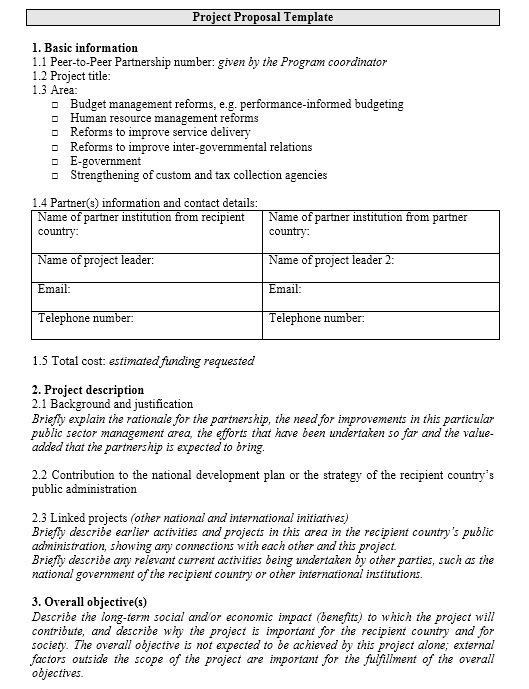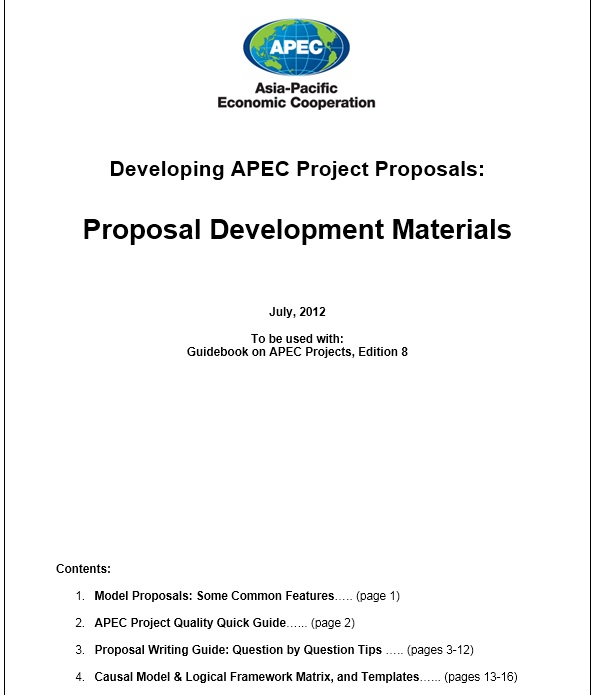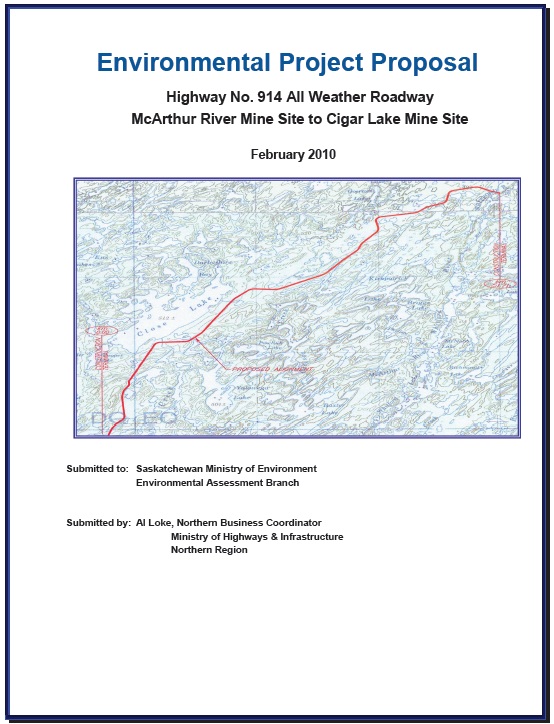Download these 17 Free Sample Government Project Proposal Templates to assist you in preparing your own format proposal quickly. You can also explore our collection of free
While preparing a proposal report for a government project it should be kept in mind that the project is of a higher level than any private sector and the country’s well-being depends upon it. For this, the report should be made honestly and in the best of health. This document is prepared by the team of a new investment project or the management of an existing organization and is presented to potential investors or lenders, which is the government. A good and genuine report should point out all the details relating to the nature of the forthcoming project or production, its history or need if there is any, growth potential or the feasibility report, objectives, and the amount of capital necessary to make the plan happen and any guarantee or security.
If a person wishes to make a proper and good project plan then he must keep the following things in mind. Such a proposal is presented to the government in order to give the entire overview or summary of the future or proposed objectives and project details.
Contents
The Project Description
In this section, all of the details about the project must be given properly and in easy language for the forthcoming investment or plan. It should briefly talk about the purpose, objectives and other such details of the project like step-wise development plans and the plan of usefully utilizing funds and investments made by the government.
The value of the Market and usefulness of the Plan
This section should provide all the details about the production projections, the usefulness, and the possible market position for that plan or product. It also addresses the projected users of the product as well as the division channels that need to be triggered for that product or plan to work effectively and efficiently.
Technical Feasibility, Manpower, Raw Materials Resources, and their Management details
The proposal should briefly comment on the technical possibilities and details of the labor, resources and the human and material management of all the required resources for the plan that is to be provided for.
Estimated time requirements for the Investment Project and Proposal
Entire details about the time period that is estimated for which the purpose is going to be completed are mentioned along with the other details of investment, possibility, and success of the proposed project of each and every step involved in the project for its successful completion.
The important activities of the Project
Details of the activities that will or are carried on by the team for the project’s success and running. The details must be included in the report to let everyone know which activities were or are needed by the project and how well the team is coping.
Other factors can also be added along with the details and points that we have discussed. To make the best Government Project Proposal you should add details of the people involved in this plan as well to encourage them and make your proposal livelier.
Free Project Proposal Templates
Here is a preview of This First Government Project Proposal Template created using MS Word,
Key Components of a Government Project Proposal
A well-structured government project proposal contains several key components; hence these parts will together set out the purpose, the area of work, methodology, and expectation for the project. Each section will contribute toward demonstrating the feasibility, sustainability, and impact of the proposed initiative.
Executive Summary
An executive summary gives you a brief account of the entire proposal. The executive summary usually deals with the purpose of the project and the problem it seeks to overcome and intends to suggest benefits from defeating such a problem. It is a first impression, and hence, it should be sufficiently interesting to draw in decision-makers and entice them to read the entire proposal.
Project Background and Justification
In this section, we introduce the circumstances and rationale that have given emergence to the proposed project. The evidence, whether in the form of data, historical reference, or past studies, serve to support the case for project necessity. With reference to existing gaps or challenges, its importance and urgency are established in realizing the proposed solution.
Objectives and Goals
Clearly defined objectives set the foundation for the proposal. This section outlines what the project intends to achieve, ensuring alignment with government priorities and public interests. The goals should be specific, measurable, achievable, relevant, and time-bound (SMART), reinforcing the project’s feasibility.
Scope of Work
The scope of work states everything that the project will do. It states what the project will be doing regarding tasks, activities, and deliverables. It defines everything included and excluded to clarify things with stakeholders. The well-defined scope helps prevent misunderstandings and ensures that all revenue stakeholders have a common understanding of what to expect from the project.
Methodology and Approach
The strategies, techniques, and resources for the successful execution of the project are discussed in this section; it includes steps of implementation, partnership selection, and innovative use of modern technologies where applicable. A well-explicated methodology gives credibility to the proposal by showing a clear action plan.
Project Timeline and Milestones
Project timeline or road maps is timeline of phases from initiation to completion along with milestones of specific stages for tracking progress in execution on schedule. Structured timelines advocate among decision-makers that a project is strategically planned and completes in time.
Budget and Financial Projections
An elaborate financial plan discloses expenses estimated for the execution of the different parameters of the project. This section presents items like manpower, materials, infrastructures, and operational costs. A transparent and justified budget helps in securing funds and promotes accountability.
Risk Assessment and Mitigation Strategies
It would be best to determine any potential risks and to note ways to reduce the impact or probability of this occurrence in government project proposals. This would handle some of the uncertainties, like budget constraints, regulatory obstacles, or downright avoidance of delays, and would now have contingency measures to be put in place to deal with the uncertainties effectively.
Evaluation and Success Metrics
For the sake of measuring the project’s impact, this section sets up evaluation criteria and key performance indicators (KPIs). It also indicates the ways through which success will be assessed so that the project can be accountable to stakeholders. Besides it, defining success metrics adds to the credibility of the proposal by showing a commitment to transparency and effectiveness.
Appendices
The final section contains supporting documents including research references, charts, legal agreements, or letters of support. These supplementary materials serve to further enhance the credibility of the proposal by supporting its assertions.
An integrated proposal thereby pieces all those important parts together in a government proposal through which a project becomes attractive, viable, and relevant to the end users-policy makers and stakeholders.
Common Challenges and How to Overcome Them
Proposals for government projects stand solid in challenges that are likely to hamper timely approvals and execution. It is, therefore, important to understand these challenges and how to address them so as to facilitate a smooth and effective process.
Perhaps the greatest challenge posed by government project proposals is the treatment of bureaucratic engagement emboldened by its very complexity. The approval process is often mired in layers of review, stringent compliance, and protracted timelines for decision-making. Therefore, worthy applicants ought to conduct painstaking research on the specific guidelines and policies that govern project proposals within the agency concerned. Further, early engagement with relevant officials can help provide insights into expectations and potential hurdles. Clear and well-organized documentation will win favor by facilitating discussion and thereby keep avoidance of any undue delay.
Ensuring Compliance with Regulations
The compliance with the regulations takes another bigger toll, for various kinds of applicable legal and financial requirements project of government has to comply. Non-compliance with these could mean rejection of submission or withdrawal of funds. Therefore a comprehensive awareness of applicable regulations such as procurement laws, environmental standards, and financial reporting obligations are very important to have. Consulting a legal and compliance professional could overall bring down this non-complaint risk associated with a proposal.
Effective Communication with Stakeholders
In many projects initiated by the government, there are several stakeholders involved: public officials, funding agencies, and community representatives. Miscommunication or inadequate engagement of stakeholders may lead to misunderstandings, overt resistance, or complete lack of support. Clarity and consistency in communication are crucial to keeping all stakeholders in the loop about the project and steering them toward the goals of the project. Regular meetings, reporting transparently, allowing all stakeholders to participate, help build trust in and commitment toward the success of the project.
By addressing these challenges proactively, government project proposals can navigate bureaucratic complexities, meet regulatory requirements, and foster strong stakeholder relationships, increasing the likelihood of approval and successful execution.

















